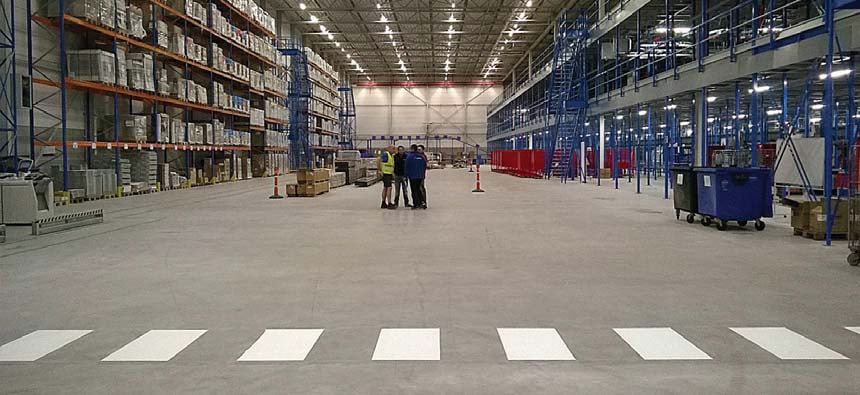Taking Floor Slabs to a New Level - perfectly flat with no joints
Published on 27 June 2017

The Concrete Society TR34 Third Edition(1) notes that “an ideal floor would be perfectly flat and have no joints”.
The Twintec Ultimate floor slab has taken floor slab design and construction to a new level with no saw-cut joints and no opening construction/expansion joints, resulting in a totally seamless floor slab
Steel fibre combined with traditional reinforcement has been in use for more than a decade now and incorporates the beneficial properties of both traditional and fibre reinforcement. Twintec Ultimate is a combined reinforcement technology that is now very popular in the construction of slabs and raft floors throughout mainland Europe.
Crack Width and Deformation
To limit crack width in normal construction, numerous, relatively thin reinforcement bars are often used in the form of a fabric. This provides sufficient anchoring length of the steel to transfer the tensile forces to the surrounding concrete. For steel fibres, the anchoring length is about one-hundredth of that necessary to anchor bars. This is due to the relatively large bond area compared with the diameter. With hybrid reinforcement, the addition of bars or fabric to the design reduces slippage of fibres. Any potential cracks are therefore limited as the fibres, in combination with the bars or fabric, absorb the majority of the tensile forces.
Benefits
Flooring designers are very familiar with the yield line cartwheel envelope pattern resulting from both a negative and a positive moment. Fibres are ideally located throughout the concrete’s cross-section but a local deviation of fibre quantity is not considered a problem as localised stress will redistribute to another part of the flow line pattern, so the overall behaviour of the plate will follow the average material behaviour.
The disadvantage of the yield line theory is that nothing is said about the crack width in the serviceability loading state (SLS). With a non-linear finite-element analysis (NL-FEA(2)) the crack growth can be calculated for the floor in service over time.
The size of the fibres is important. As a rule of thumb, a minimum of 30kg/m3 fibres with a maximum fibre length of 60mm should be used. In non-plate construction with a lower redistribution capacity (eg, beams supporting the slabs or columns in buildings), it is advised to increase the fibre content to 40 or 50kg/m3.
Production Process
Critical success factors in the production process include: concrete, planning, skilled/experienced workers and high levels of quality control. Successful construction requires the expertise and experience of a specialist steel fibre flooring contractor to ensure that the combination of fabric and steel-fibre-reinforced concrete is placed correctly. Essentially, the specification of the mix needs to be carefully controlled and managed – the steel-fibre concrete can be pumped or directly discharged as required. Robust quality and site control is paramount to successful construction. The application of a dry-shake topping via a mechanical topping spreader will ensure surface fibres are suppressed and improve abrasion resistance.
Control of Shrinkage Cracks
Adding fibres to concrete brings an improvement in the toughness and wearing strength and reduces shrinkage cracks.
Reduced life cost and construction time
As well as all the functional advantages, cost reductions are also achieved. The slab thickness can be reduced compared to traditional fabric slabs, resulting in less concrete and traditional reinforcing steel. The cost of the structure is reduced, less and simpler-shaped traditional reinforcement enhances consistence. Omitting stirrups and/or punching bars is very cost effective. The lack of construction–expansion joints and saw-cut joints, and with a guaranteed
design crack width of maximum 0.3mm, the Ultimate slab will reduce year-on-year maintenance costs of the floor slab and the material handling equipment, as well as increasing operational efficiencies.
Topics: Twintec Ultimate, Warehouse
Comments
If you liked this article please share it or add a comment below